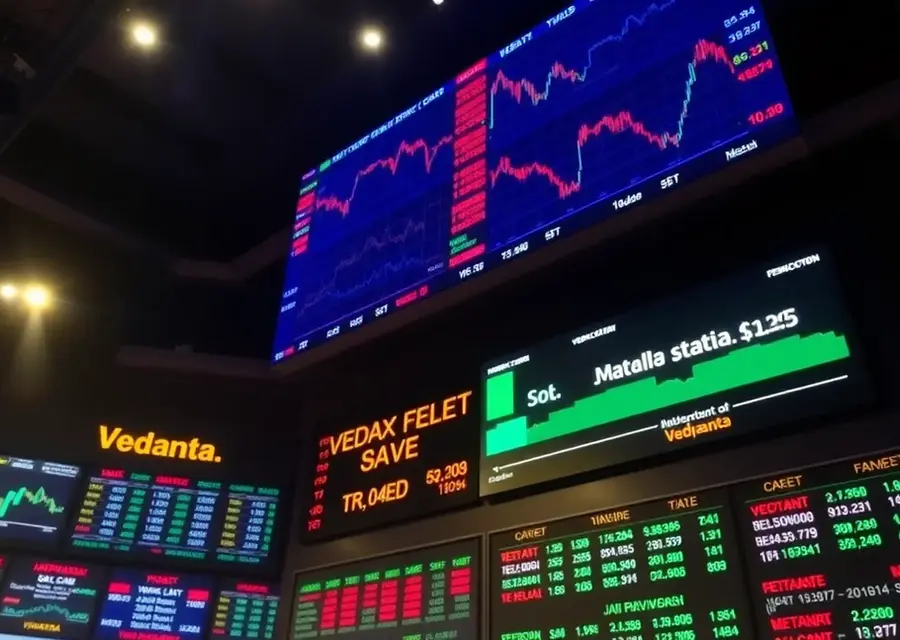Vedanta Jaiprakash assets bid and the insolvency showdown reshaping Indian markets
- THE MAG POST

- Sep 8
- 4 min read

Vedanta Jaiprakash assets bid. Markets watched as a complex negotiation unfolded, testing the boundaries between corporate strategy and debt management. The audacious offer signals a new default for how industrial assets are valued when insolvent groups seek revival through credible, but debt-laden, combinations.
Behind the headlines lies a web of creditors, valuation debates, and governance questions. Investors ponder whether Vedanta's bid creates true synergies or merely reshuffles liabilities, while JP's creditors weigh the risk of losses and the timing of resolutions. Analysts caution that even a winning bid must overcome regulatory clearance and financing challenges.
Vedanta Jaiprakash assets bid reshapes insolvency playbook
Markets watch with heightened scrutiny as Vedanta’s aggressive bid enters the final stage of the Jaiprakash Associates resolution. This audacious move reframes the calculus of value in distress assets, forcing investors to weigh synergy potential against the drag of legacy debts and litigation risk. The bid’s size signals a willingness to contest traditional priorities in asset-rich groups facing creditor pressure.
Behind the headlines lies a battleground of balance sheets, governance questions, and financing realities. Analysts debate whether the bid reflects true strategic fit or a reshuffling of liabilities that could test Vedanta’s deleveraging goals. In this evolving contest, the next steps—financing arrangements, regulatory clearances, and the outcomes for JP’s creditors—will determine whether the bid translates into sustainable value or a temporary repricing of risk.
JP Associates’ insolvency context and the asset portfolio
The Corporate Insolvency Resolution Process (CIRP) framework sets the stage for competing plans to revive Jaiprakash Associates, a firm whose loans accrued to several tens of thousands of crores. Creditors, including major banks, scrutinize bids not only for asset quantity but for the quality of recoveries and the legal integrity of the resolution path. The portfolio spans real estate, infrastructure, and related ventures, each carrying different risk profiles and timelines.
Asset-wise, the Jaypee Greens developments and related townships anchor the portfolio, complemented by power ventures in which the group holds stakes. The mix creates a challenging evaluation for bidders: leverage and execution risk in high-capital projects versus potential recoveries from land banks and operating assets. The resolution committees will prioritize cash realization and governance alignment as they sift through proposals.
Market response: stock moves, bids, and analyst takes
Vedanta’s shares softened on the news, whileJaiprakash Power Ventures surged on momentum in the resolution race, painting a bifurcated market reaction. Analysts have offered mixed interpretations: some view Vedanta’s outbid as a signal of confidence in execution capability, others warn that the financing burden could constrain the upside if debt service strains liquidity in the near term.
Nuvama and ICICI Securities flag that the deal may constrain re-rating unless financing is secured and deleveraging remains the priority. They stress the need for strategic alignment between Vedanta’s existing businesses and the new assets, along with credible plans to address ongoing legal and regulatory headwinds. The balance of risk versus reward remains a central theme for investors watching the process unfold.
Valuation and credit implications for creditors
The creditor committees, including SBI, ICICI Bank, and LIC, are weighing recovery timelines against the restructuring diagram. A successful bid could improve outcomes for some lenders but may still involve haircut considerations and complex execution. The resolution process will test how equity value is preserved or redistributed when large, diversified groups undergo insolvency fixes.
From a governance lens, the transaction may prompt tighter oversight of asset backward-linked liabilities and clearer alignment between asset monetization and deleveraging trajectories. If financing structures prove overly aggressive, creditors could demand tighter covenants or staged disbursements to safeguard recovery prospects while avoiding default cascades.
Strategic implications for Vedanta and the broader market
For Vedanta, the bid could unlock strategic access to assets that complement existing operations, provided the financing and integration hurdles are overcome. The move also raises questions about capital allocation discipline and whether pursuing distressed assets at scale could crowd out other deleveraging opportunities.
The market, meanwhile, will watch for how this unfolds in practice: whether the open challenge yields a clearer valuation signal or spurs a broader re-pricing of risk across infrastructure and real estate plays. In either case, the timing, financing, and regulatory gateways will determine the durability of any announced value creation from the asset acquisition.
Key Takeaways
Vedanta Jaiprakash assets bid introduces a high-stakes dynamic to a complicated insolvency case, highlighting the tension between growth ambitions and debt reduction. The outcome will hinge on financing clarity, creditor consensus, and governance safeguards, shaping not only this deal but the broader approach to distressed assets in the market.
Topic | Highlights |
SEO Keyphrase | Vedanta Jaiprakash assets bid referenced in the article |
Key Players | Vedanta, Jaiprakash Associates, Adani Group, other bidders |
Context | Jaiprakash Associates entered CIRP with large loan defaults |
Market Reaction | Vedanta stock fell modestly; Jaiprakash Power Ventures rose on momentum |
Analyst Views | Nuvama and ICICI Securities warn of limited re-rating without financing clarity |
Creditor Landscape | SBI, ICICI Bank, LIC participate in CIRP committees |






















































Comments